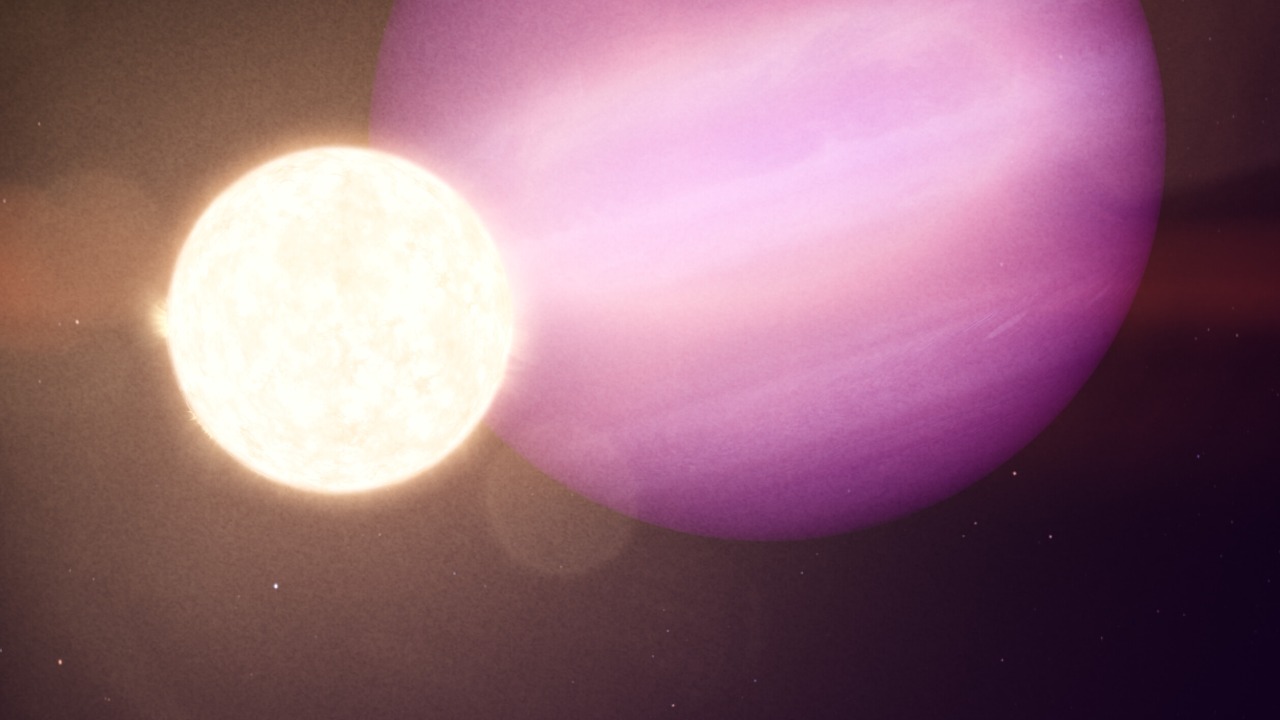
In a groundbreaking discovery, a team of astronomers led by Dimitri Veras at the University of Warwick has observed a white dwarf star, known as WD 1856+534, in the act of devouring a planet-sized object. This celestial event, the first of its kind to be directly observed, provides compelling evidence that dying stars can consume nearby planets during their cooling phase.
The Discovery Process
The team utilized data from the Kepler Space Telescope and the Gaia mission to detect the transiting object’s irregular light curve. This irregularity indicated that the object, with a mass 14 times that of Jupiter, orbits WD 1856+534 every 1.4 days at a distance of just 2% of the Earth-Sun separation. Kepler’s observations and Gaia’s precise measurements were instrumental in identifying these unique characteristics.
Follow-up spectroscopy from the William Herschel Telescope confirmed the presence of atmospheric pollution in the white dwarf, with high levels of metals like calcium and magnesium. This pollution suggests that the star is actively accreting planetary debris, a phenomenon first hinted at in 2019 when astronomers began analyzing the Kepler data. The discovery was finally published in a Nature study on October 29, 2020.
Characteristics of WD 1856+534
WD 1856+534 is a cooling remnant of a Sun-like star, with a surface temperature of approximately 11,000 Kelvin and a mass of 0.6 solar masses. The star, located 80 light-years away in the constellation Cygnus, is about 5 billion years old and has entered the white dwarf phase of its life cycle. At this stage, the star no longer fuses hydrogen but continues to exert a significant gravitational influence on nearby objects.
Despite its low luminosity and small size, roughly equivalent to Earth’s, the star’s gravitational pull is strong enough to disrupt the orbits of nearby bodies. This is particularly evident in the case of the 14 Jupiter-mass object, which orbits at an extremely close distance to the star.
The Consumed Planet-Sized Object
The composition of the consumed object is believed to be rocky or icy, as inferred from the high levels of calcium, magnesium, and silicon detected in the white dwarf’s polluted atmosphere. The object’s mass is 14 times that of Jupiter, and it orbits the star at a distance of just 0.02 AU, or 2% of the Earth-Sun distance. This close proximity to the star has led to tidal disruption, as observed in the variations in the object’s light curve.
As Dimitri Veras explains, “The object is being torn apart by the star’s gravity, leading to this unprecedented accretion event.” The fact that the object has survived so close to the white dwarf, despite the expected engulfment, is a testament to the complex dynamics at play in these systems.
Implications for Planetary Systems Around Dying Stars
This event demonstrates that planets can survive the red giant phase of their host star and migrate inward. The 1.4-day orbit of the consumed object suggests that dynamical interactions occur after the main-sequence phase of the star’s life cycle. This finding is supported by evidence from other white dwarfs, such as those with detected metal lines indicating past planetary cannibalism. Studies of over 100 polluted white dwarfs observed by the William Herschel Telescope have provided further evidence of this phenomenon.
However, such close-in survivors are rare. Models predict that most planets are either ejected or consumed during the star’s expansion phase. This makes the discovery of the 14 Jupiter-mass object around WD 1856+534 all the more remarkable.
Future Observations and Research Directions
Continued monitoring of WD 1856+534 with the James Webb Space Telescope will allow astronomers to detect infrared signatures of dust from the disrupted object. This could provide further insights into the nature of the accretion process. Additionally, radial velocity measurements using ground-based telescopes could refine estimates of the object’s mass and orbit, potentially confirming whether it is an intact planet or fragmented debris.
As Veras notes, “This discovery opens the door to finding more such systems, helping us understand the end stages of planetary systems.” The search for more examples of stellar cannibalism will undoubtedly continue, shedding light on the fate of planets around dying stars.
Comparisons to Other Stellar Cannibalism Events
This event can be compared to the 2019 observation of a similar transiting object around the white dwarf ZTF J0139+3456. However, in that case, the object had a 1.5-hour orbit, but its mass was not confirmed. This contrasts with the current discovery, where the object has a confirmed mass of 14 Jupiter masses.
Stellar cannibalism has also been inferred from lithium enrichment in red giant stars. However, white dwarfs provide cleaner evidence of late-stage planet eating due to their inert atmospheres. The University of Warwick team’s unique contribution lies in their combination of transit photometry with pollution analysis, a method that offers more direct evidence than earlier indirect detections.
More from MorningOverview